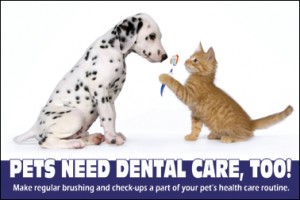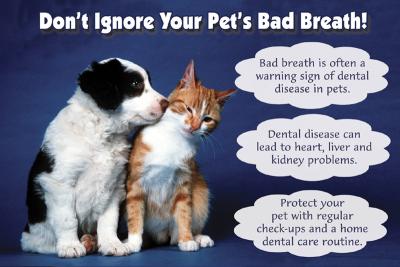In honor of pet dental health month, Umbrella Pets is offering 20% off all dental care products as well as the opportunity to have a dental care training session for only $25 for individual and $15 per person for groups. Please
 Check with your local veterinarian, for many offer special promotions and discounts on teeth cleaning during February as well.
Check with your local veterinarian, for many offer special promotions and discounts on teeth cleaning during February as well.
Dilworth Animal Hospital is offering 20% off cleanings during the month of February. Please contact them at (704) 808-PETS to schedule an appointment.
So why is dental care important for pets?
Most of us see the benefit of daily brushing, twice yearly cleanings, and regular dental X-rays for ourselves. And though dogs don’t eat the wide range of cavity-causing foods we enjoy, they need regular dental care for many of the same reasons we do:
- To prevent the build-up of plaque, tartar, and calculus
- To check for and prevent gingivitis and gum disease
- To look for trauma, such as broken or fractured teeth
- To inspect for developmental or orthodontic problems
So pet’s need their teeth brushed too! Ideally, every day! I know this could be difficult if your pet is not used to it, but there are things you can do to get them used to it. Or at the very least, there are different things you can do to keep your pet’s teeth fresh and clean in lieu of brushing.
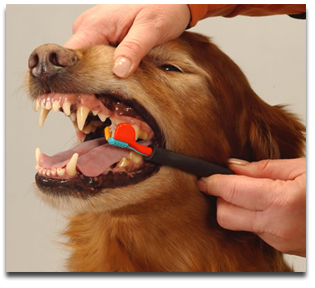 Brushing is the best way to clean your pet’s teeth as well as scheduling regular dental cleanings with your vet. WebMD has a great slideshow how-to guide on brushing your dog’s teeth. There are a few things to keep in mind when you do begin brushing your pet’s teeth. Don’t try to force open your dog’s mouth, for they will struggle and it will be uncomfortable for your pet. Of course, in the beginning, they will always struggle, so the key is to introduce your pet to brushing correctly. Don’t brush a ‘dirty’ mouth meaning, it is a good practice to have your pet’s teeth professionally cleaned before you begin brushing so you don’t push bacteria into the gumline and into the bloodstream. Don’t scrub your dog’s teeth. Just like ours, gums can be sensitive, so you don’t need a lot of pressure to get the benefit. If a cleaning is not due, a veterinary exam beforehand would be helpful to find out if your dog’s gums are inflamed. If your dog has mild gingivitis, brushing too hard can hurt their gums.
Brushing is the best way to clean your pet’s teeth as well as scheduling regular dental cleanings with your vet. WebMD has a great slideshow how-to guide on brushing your dog’s teeth. There are a few things to keep in mind when you do begin brushing your pet’s teeth. Don’t try to force open your dog’s mouth, for they will struggle and it will be uncomfortable for your pet. Of course, in the beginning, they will always struggle, so the key is to introduce your pet to brushing correctly. Don’t brush a ‘dirty’ mouth meaning, it is a good practice to have your pet’s teeth professionally cleaned before you begin brushing so you don’t push bacteria into the gumline and into the bloodstream. Don’t scrub your dog’s teeth. Just like ours, gums can be sensitive, so you don’t need a lot of pressure to get the benefit. If a cleaning is not due, a veterinary exam beforehand would be helpful to find out if your dog’s gums are inflamed. If your dog has mild gingivitis, brushing too hard can hurt their gums.
8 Tips for Good Doggie Dental Care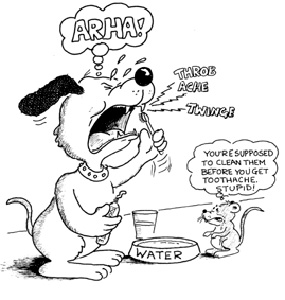
- Get your dog regular exams and cleanings.
- Start young.
- Brush gradually and gently.
- Use toothpaste made specifically for dogs.
- Use a pet-specific toothbrush.
- Brush in back.
- Chew on this.
- Make tooth brushing fun and rewarding.
How you introduce your pet to dental care is just as important as continuing the dental care. If the experience is stressful and forced, your pet will have anxiety when you try again. If you make the experience positive and fun, it would benefit everyone involved. After every session, even if you are just rubbing their gums, reward them with tons of love, praise and petting. Giving them a dental treat or a treat they really love would also help. While cats are typically harder to introduce, it can be done with patience, repetition and tons of praise and treats. How to introduce cats and dogs to dental care is basically the same, but cats have a few extra steps that are customized for them.
So how do you introduce your dog to dental care correctly? Start by massaging her lips with your finger in a circular motion for 30 to 60 seconds once or twice a day for a few days, or weeks if your pet still struggles. When she is comfortable with you touching her lips, you can move on to the teeth and gums. Move your finger around her teeth, front and back. She will lick you and try to push your hand away or close her mouth, but reassure her with praise and love, when she lets you touch her teeth. This will get your pooch used to the idea of having her teeth brushed and having hands in her mouth (which is an added benefit for other reasons!)
When your pet seems comfortable being touched this way, now you can add toothpaste and either a finger brush or pet toothbrush. First, put a bit of pet-formulated toothpaste on her lips to get her used to the taste. You could also let her lick some of your fingers. Next, introduce the finger brush or toothbrush by letting them smell and lick the toothbrush. Letting them nibble at the brush is also good. Make sure the toothbrush is designed especially for dogs though. It should be smaller than a human toothbrush and have softer bristles. There are many different types of pet toothbrushes, some have two or three sides, and some are similar to human brushes, b
and either a finger brush or pet toothbrush. First, put a bit of pet-formulated toothpaste on her lips to get her used to the taste. You could also let her lick some of your fingers. Next, introduce the finger brush or toothbrush by letting them smell and lick the toothbrush. Letting them nibble at the brush is also good. Make sure the toothbrush is designed especially for dogs though. It should be smaller than a human toothbrush and have softer bristles. There are many different types of pet toothbrushes, some have two or three sides, and some are similar to human brushes, b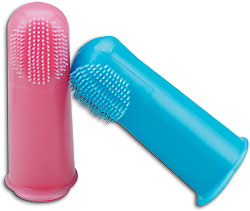 ut are angled differently or thinner. Find the one that best fits your pet. My suggestion though is to start with a finger brush until your pet is completely comfortable with the process. They will not bite at your finger as hard as they will a toothbrush so you can clean a bit more thoroughly in the beginning. Finger brushes are little, plastic covers for your finger that has a brush on the side. The bristles are plastic so different then regular toothbrushes, but work the same.
ut are angled differently or thinner. Find the one that best fits your pet. My suggestion though is to start with a finger brush until your pet is completely comfortable with the process. They will not bite at your finger as hard as they will a toothbrush so you can clean a bit more thoroughly in the beginning. Finger brushes are little, plastic covers for your finger that has a brush on the side. The bristles are plastic so different then regular toothbrushes, but work the same.
After weeks of introducing your pet to the process and having fun with them, the final step is to apply the toothpaste to the toothbrush and gently brush the teeth. Don’t force your pets mouth open. Focus on one area of the mouth, by lifting the lips in that area, placing the bristles at a 45-degree angle to the teeth and clean in small, circular motions. The outer side of the teeth, the side that is closer to the cheek, usually has the most tartar, so a downward stroke can help to remove it. Your dog may fight you on this so if they do, don’t force it, only a small amount of tartar accumulates there anyway. As you and your pet get comfortable with brushing, try to establish a routine so you don’t forget. Ideally, brushing should be done daily, but if that is not possible, a couple times of week would suffice as long as you are using other dental care products too.
What else can you do if your pet is just not comfortable with brushing?
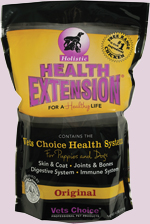 Dog Food
Dog Food
Just like when we eat sweets and junk food, when your pets eat lower quality food, that will affect their teeth as well. Dry food is better for teeth for some assist with cleaning as they crunch on them, some brands target tartar and plague control, and some help remove the bacteria in the mouth leaving fresh breath. Your vet can recommend a specially formulated dry food that can slow down the formation of plaque and tartar if tooth pain or medical issues are causing concern. For basic nutrition and health care, a good quality dog food, wet or dry, can help with managing tartar and plague, bad breath, and more. The benefits of providing your pet with a high quality food is immense. Check back soon for more information on what food you should be feeding your pets as well as how to read a dog food label.
Dog Treats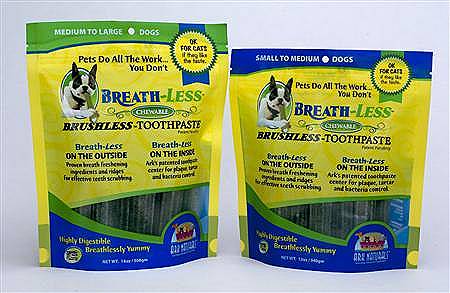
There are several pet treats that are marketed for dental care. Make sure that you read the labels and understand what ingredients the treats have so they don’t cause other issues. From bone like treats, to single treats, to treats with actual toothpaste in them, there are tons of options to supplement your dental care regime.
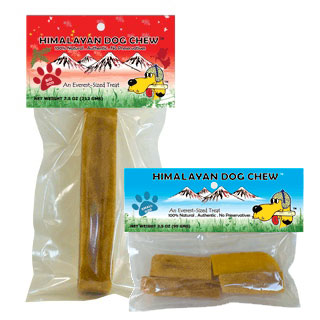 Chews
Chews
Chew toys and natural, edible chews are another great option to help maintain your pet’s dental health. Chews satisfy the natural desire to chomp, while making his teeth strong and cleaning the 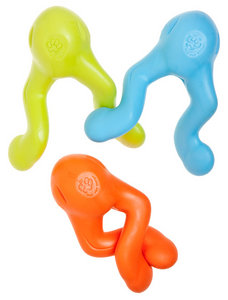 teeth with the rubbing motion. Gnawing on a chew toy also help massage the gums and help keep the teeth clean by scraping away soft tartar. Himalayan Chews and the Zogoflex toys are great for this. Check out our store for more information on these products. Gnawing also reduces your dog’s overall stress level, prevents boredom and gives him an appropriate outlet for his natural need to chew.
teeth with the rubbing motion. Gnawing on a chew toy also help massage the gums and help keep the teeth clean by scraping away soft tartar. Himalayan Chews and the Zogoflex toys are great for this. Check out our store for more information on these products. Gnawing also reduces your dog’s overall stress level, prevents boredom and gives him an appropriate outlet for his natural need to chew.
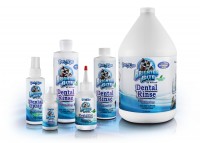 Dental Sprays, Gels, Wipes, Water Additives
Dental Sprays, Gels, Wipes, Water Additives
These products are added to the food or water, squirted directly in the mouth, or used on the teeth directly. No matter the method, be sure to read the labels and understand the ingredients that are used. You also need to understand how the product does what it claims to do. Is it meant to stay on, go in food, be licked off, etc.
Portions of this article were pulled from articles on WebMD. For more information or to read the full articles, please visit the Benefits of Brushing your Dog’s Teeth, 10 Tips for Better Dental Health in Dogs,




